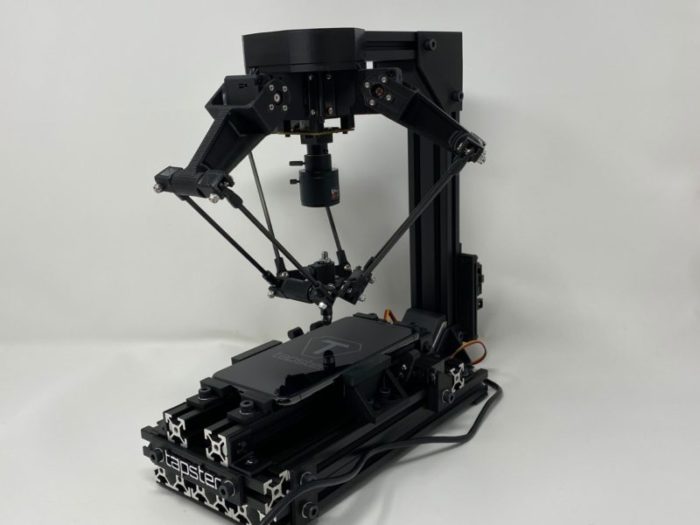Article
Testing Strategies for Bluetooth Medical Devices

Here at Orthogonal, we’re always pushing the envelope of our medical device software development process, trying out and integrating new technologies and methods that can make Software as a Medical Device (SaMD), Digital Therapeutics (DTx) and connected medical device systems safer and more effective – and make developing them much faster. Our use of mechanical robots that simulate human smartphone users is just one of our latest efforts to upgrade our capability to deliver on these goals.
The potential of connected software that works with devices to manage and monitor health is staggering, and, at the moment, still largely untapped. Take ear infections, for example. These days it seems like virtually everyone is using listening devices like Bose or Beats headphones or Airpods. They’re already inserted into our ears and deliver sound into our ear canals. They are computer-based, connected and powerful. So why can’t they also serve as medical diagnostic tools by looking and sensing inside our ears? Isn’t it crazy that I can Zoom my doctor to discuss an earache, but have to go into the office for the doctor to use a $20 otoscope to look in my ear and diagnose an ear infection? We already see this dual functionality with smartwatches that can monitor users 24/7 for cardiac issues.
The medical industry has historically worked in what’s known as “waterfall development pathways.” Waterfall is a sequential approach to development that is slow, methodical, and reliable. However, this process is not very good at responding to changing requirements, and it often leads to delays in incorporating digital technologies such as smartphones, AI, and the cloud into medical devices.
Orthogonal believes there is an opportunity to move faster without endangering users. With modern engineering, we create fast feedback loops that make it possible to get accurate data more quickly, allowing us to pivot, innovate, and test at previously unattainable speeds. This also allows us to simultaneously raise the bar on quality and compliance for all our devices.
At the same time as we’re accelerating our internal procedures, we still must prove to regulators that comprehensive testing, including risk analysis, has been completed for every medical device we help build. And every time updates are made or features are added, this process has to be repeated. Due to these long and tedious review processes, it can be painstakingly hard to stay up-to-date as the operating systems our mobile devices run on release new versions.

That’s where Tapster comes in. They’re a robotics firm based in Chicago, making shoeboxed-sized robots that physically interact with touchscreens. The Tapster robots advance the testing automation process by emulating how human users control a mobile app on their smartphones, letting us replicate actions such as taps, swipes and button presses with a robotic finger – and saving us from the repetitive (and error-prone) work of testing and retesting our apps by hand. We’ve been working with Tapster for over a year, and the more we’ve worked with them and their robot, the easier it has become to envision this kind of robotic automation becoming a standard tool for medical device testing, especially in the connected space.
Here is an early example of the work we did to get acquainted with our Tapster robot, affectionately named Fred “Tappy” Astaire. (The musical and lighting selection was the inspiration of one of our talented engineers, Erik Bjorklund.)
Our focus going forward is on exploring more use cases for the Tapster robot to automate testing, where the ROI on the automation investment yields terrific gains in speed and quality of testing and retesting of medical device software.
As a partner, the Tapster team has been a great fit from the get-go. The company’s founder, Jason Huggins, has an incredible legacy as the creator of Selenium, a pioneering testing automation system for web browsers, and Sauce Labs, a continuous, cloud-based testing platform. Tapster has become our strategic partner with whom we regularly have both strategic and tactical discussions to create solutions to our unique set of health care problems. Together, we’re creating workable engineering that matters.
Our work with Tapster is just the latest example of Orthogonal’s M.O. Our roots are in the born-digital world of the Internet, and Orthogonal was spun out of a company that for nearly 15 years built cutting-edge connected software for many industries before we focused to work exclusively on connected medical device software. Our decision to make this shift was driven by the realization that while this space has enormous potential, the software creation techniques already in play weren’t fast or flexible enough. So we’ve spent the last decade improving the processes to create connected medical device software by fusing modern software engineering methods with traditional medical device safety, effectiveness, and compliance requirements.
While we take our role as a thought leader very seriously, we know our work is just getting started. It’s important to us to continue to make new mistakes and to grow with our learnings instead of stalling out. We’re investing in creating the technology and processes that will shape and mold the future, which is why our partnership with Tapster is so important.
Learn more about our work with Tapster in this post from the Tapster blog.
About the Author
Randy Horton, VP, Solutions and Partnerhips
Related Posts

Article
Testing Strategies for Bluetooth Medical Devices

Article
Don’t Patch That Medical Device! Quick, Patch It!

Article
TINY GVS: Reimagining the Validated State

Article
Cloud Computing & Validation: 6 Key Recommendations